
Alle origine della Terra di Mezzo Kalevala (Parte prima)
This is how the world begins in the Kalevala, Finland's national epic poem, first published in the nineteenth century. Later in the text, there will be talking salmon, forest demons, wolves that stalk the deadlands, incest, suicide, and a mysterious artefact called the Sampo, forged by a legendary blacksmith, which acts like an anchor for the.
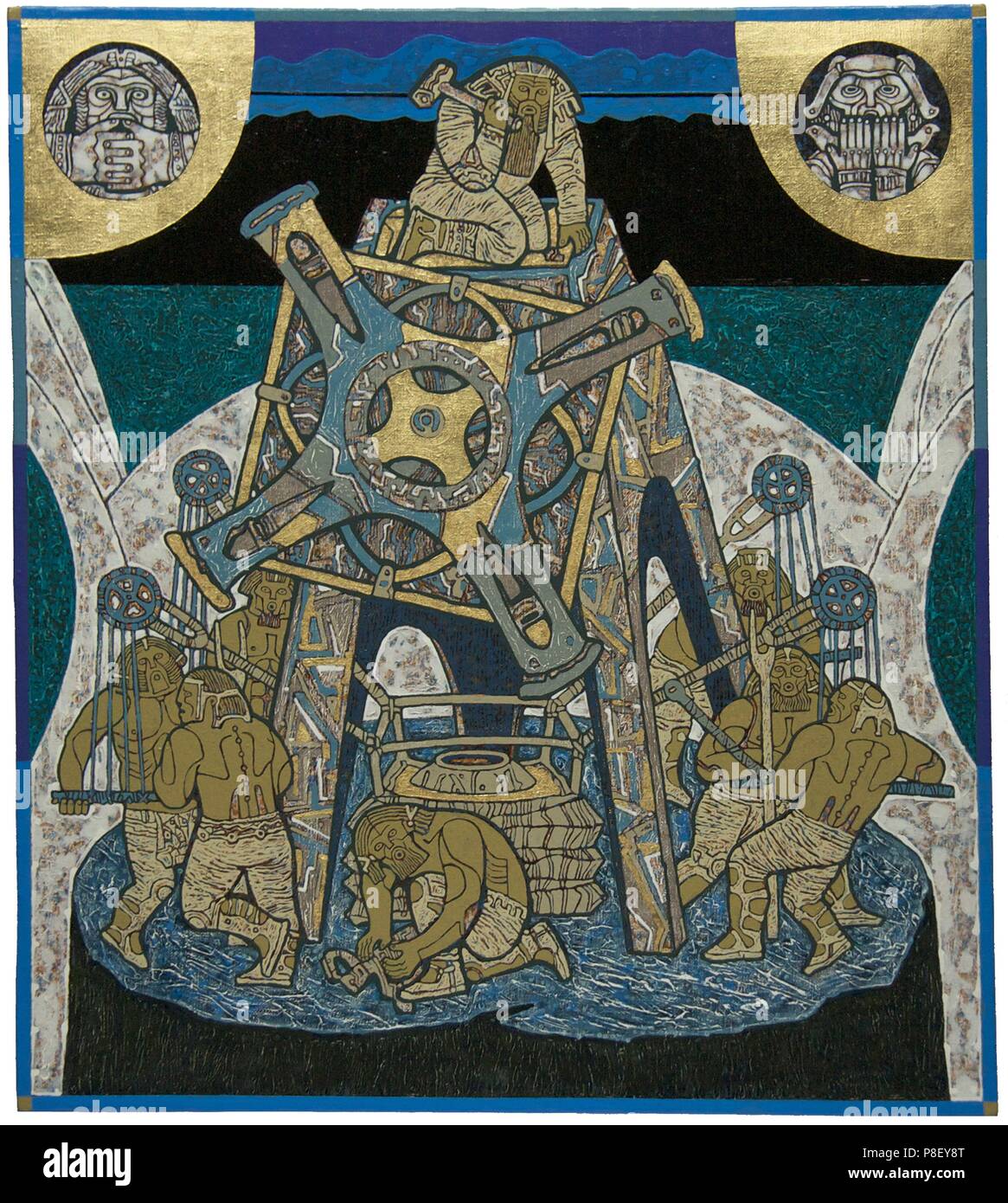
Sampo. Illustration to the national epic Kalevala. Museum PRIVATE COLLECTION Stock Photo Alamy
Sees the magic Sampo rising, Sees the lid in many colors. Quick the artist of Wainola Forges with the tongs and anvil, Knocking with a heavy hammer, Forges skilfully the Sampo; On one side the flour is grinding, On another salt is making, On a third is money forging, And the lid is many-colored. Well the Sampo grinds when finished,
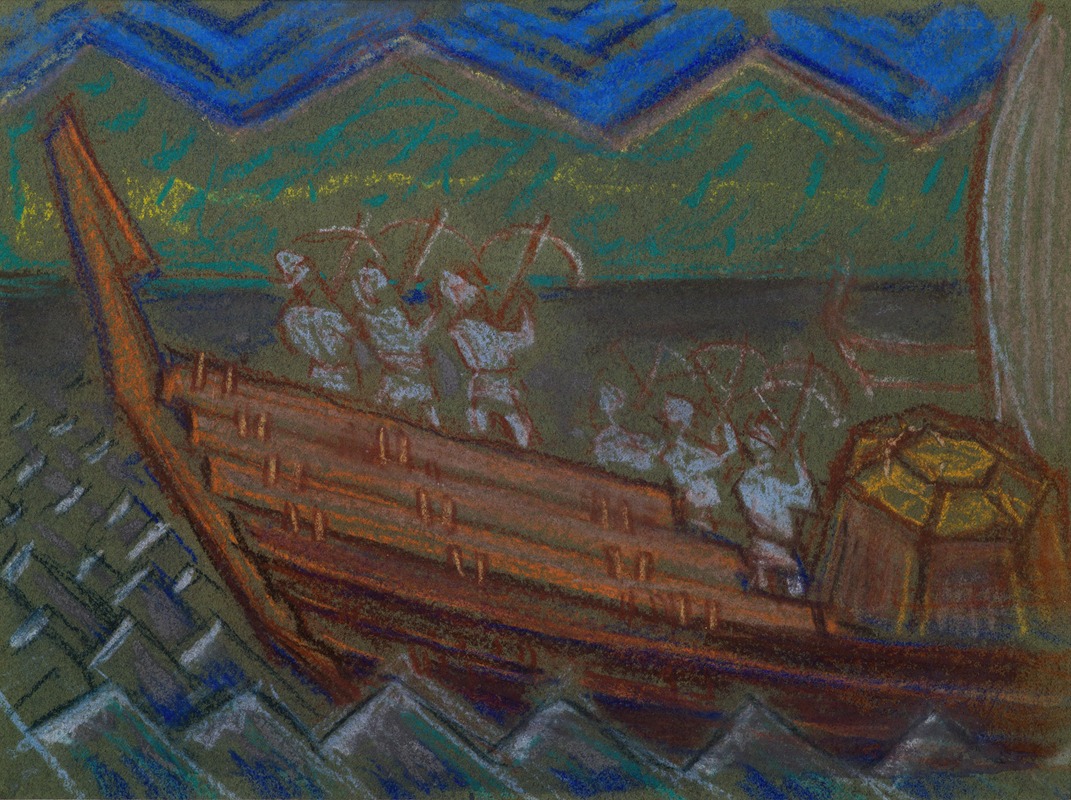
The Great Kalevala, defending Sampo from the boat with archers by Akseli GallenKallela Artvee
Smith Ilmarinen is forging the magical mill called Sampo, a centerpiece in many of Kalevala's stories. Public Domain After building his furnace in Pohjola, Ilmarinen began his work. On the first day, Ilmarinen forged a crossbow with a golden bow, silver tips and copper shaft. The crossbow demanded a victim each day, and two on feast days.
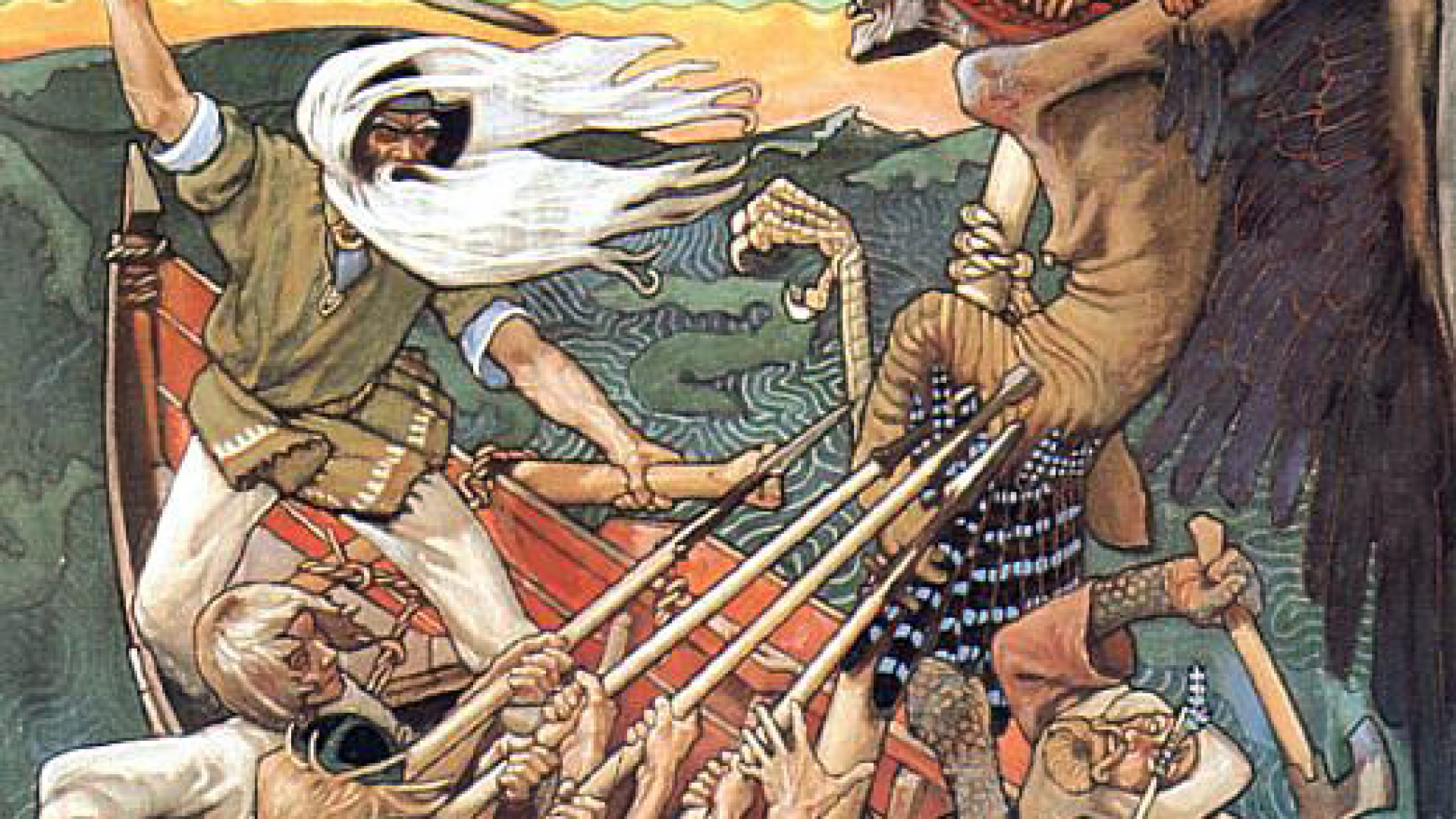
Kalevala Day in Finland TheMayor.EU
Sampo on tunnettu erityisesti suomalaisesta kansanrunoudesta kootusta Kalevala-eepoksesta, jossa sillä on tärkeä rooli. Eri taruissa sampo on erilainen, sillä on myös useita nimityksiä ja ilmiasuja. Kalevalassa käytetyissä sampotaruissa sampo on ihmeellinen, rikkauksia tekevä mylly.
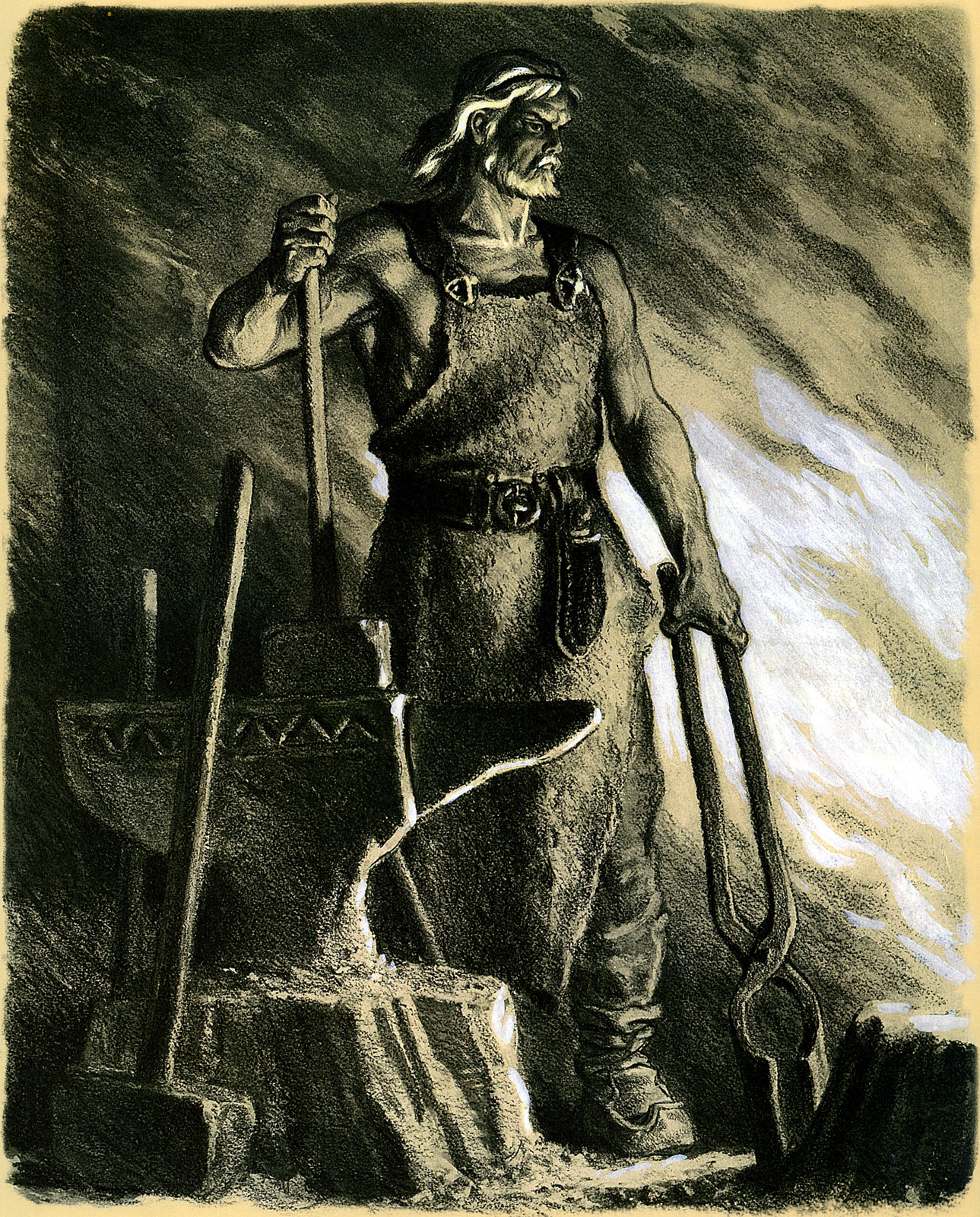
jestormbringer El Kalevala
Grasps the Sampo with one talon, Drags the treasure to the waters, Drops the magic lid in colors From the red rim of the war-ship To the bottom of the deep-sea, Where the Sampo breaks in pieces, Scatters through the Alue-waters, In the mighty deeps for ages, To increase the ocean's treasures, Treasures for the hosts of Ahto. Nevermore will.

kalevalan sampo Mytologia, Taidehistoria, Kansanperinne
Sampo är i finsk mytologi (se Kalevala) ett slags magisk artefakt, smidd av Ilmarinen, men exakt vad det var vet man inte. Sampo har tolkats på många sätt: en världspelare eller ett världsträd, en kompass eller ett astrolabium, ett bysantinskt mynt, en dekorerad Vendel-sköld, en kristen relik osv. I Kalevala, tolkade Lönnrot det som en.
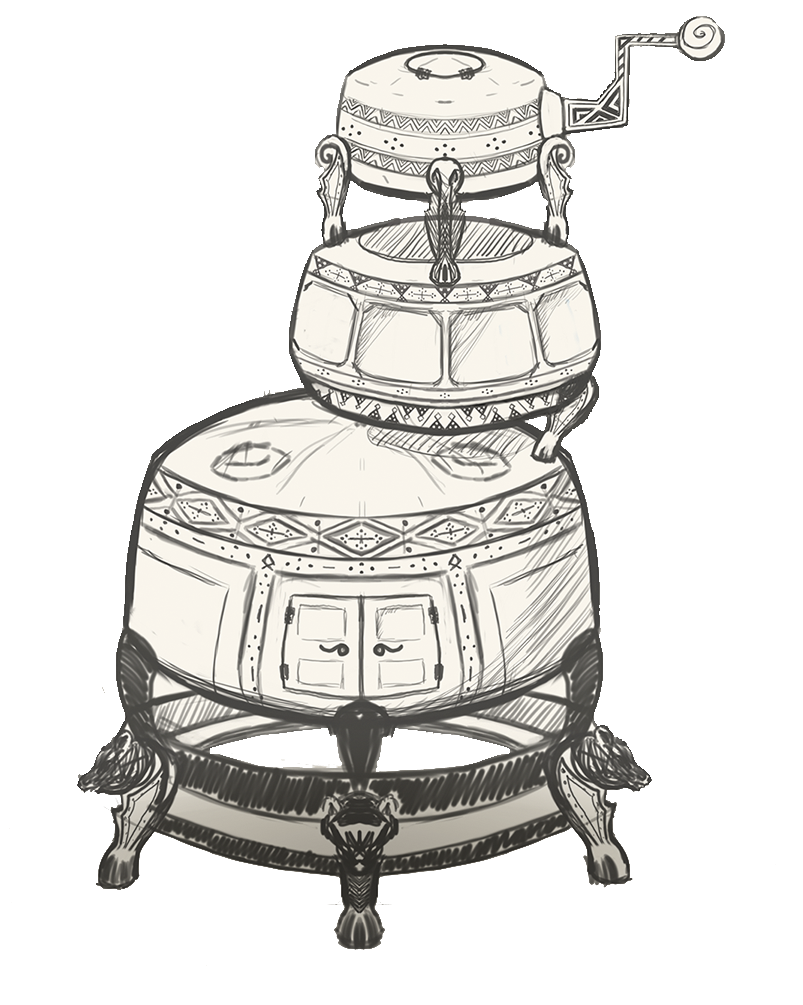
Characters of the Kalevala
The graphic novel Kalevala, created by Sami Makkonen, was the talk of the year in 2019. Makkonen, who has a successful career in the US, presents his strongly unique vision in the second part his adaptation of the national epic. Väinämöinen, Lemminkäinen and their companions set on a journey towards the North to steal Sampo, the magical.
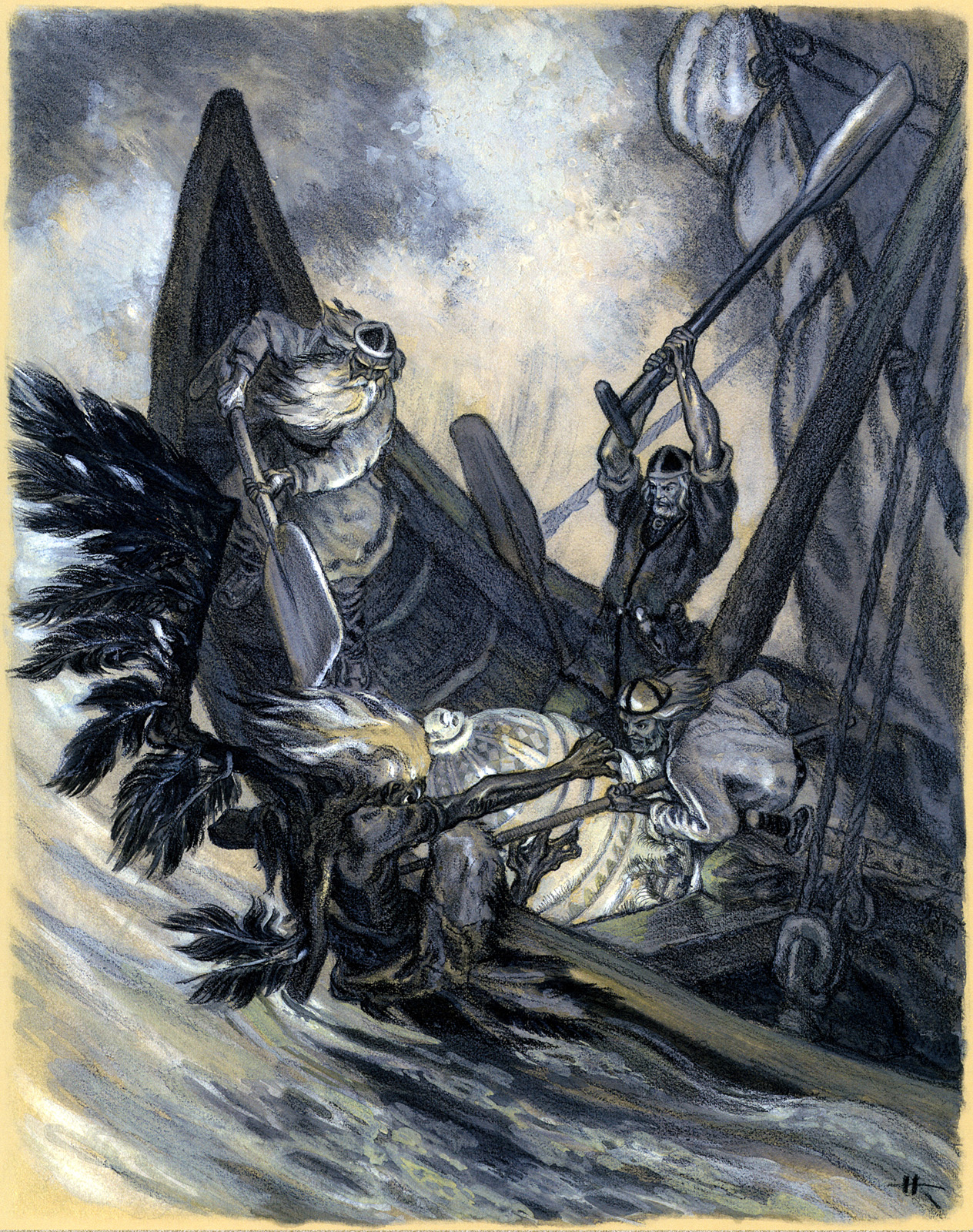
Taverna das Cebolas O Sampo uma das aventuras de Vainamöinen Mitologia Finlandesa
Sampo (Russian: Сампо) is a 1959 Soviet-Finnish fantasy film based loosely on the events depicted in the Finnish national epic Kalevala.In the United States, it was released in an edited version, The Day the Earth Froze, by American International Pictures as a double feature with Conquered City. This version was later featured in a 1993 episode of Mystery Science Theater 3000.
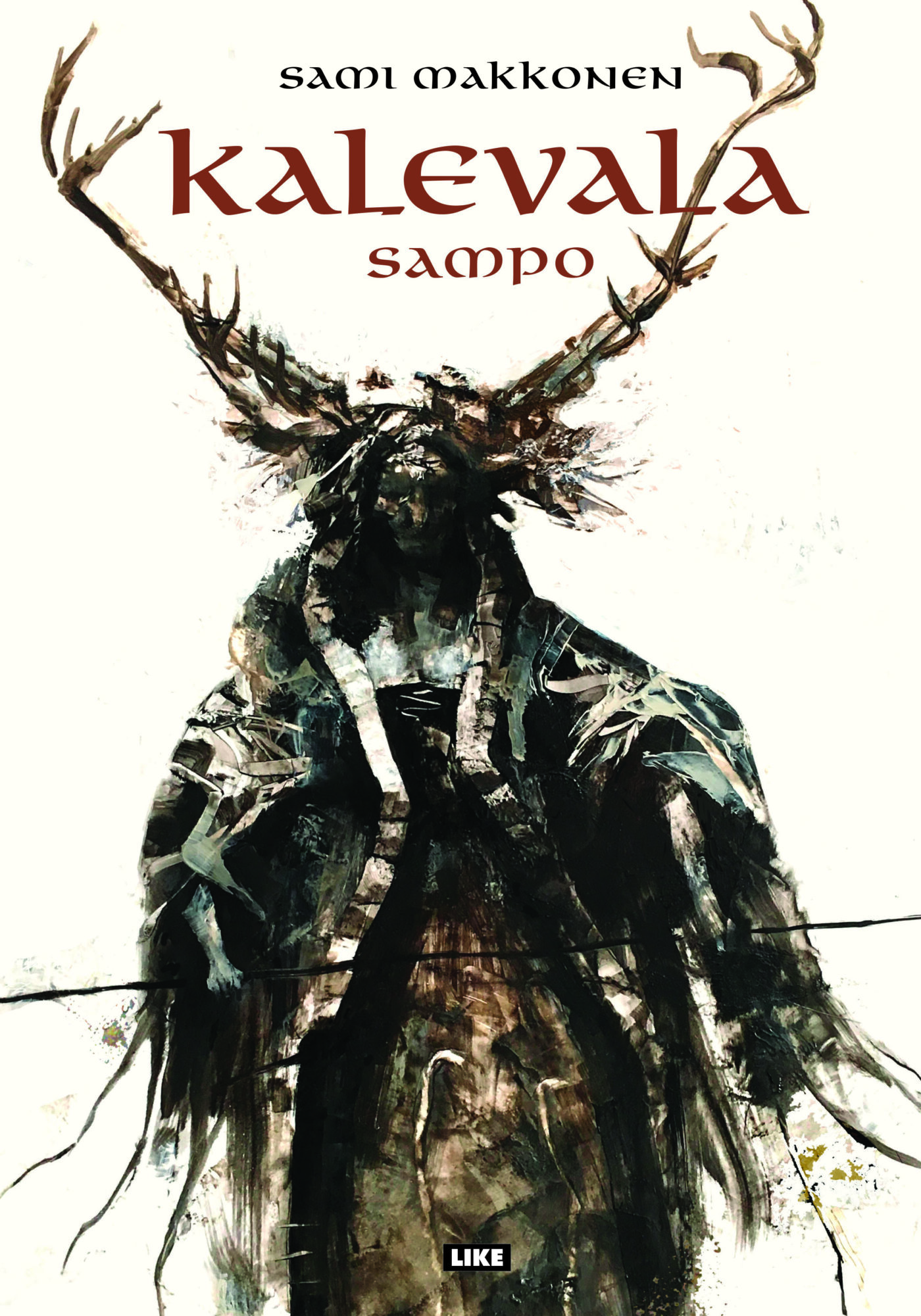
Kalevala Sampo
Capture of the Sampo. The Kalevala, by John Martin Crawford, [1888], at sacred-texts.com RUNE XLII. CAPTURE OF THE SAMPO. WAINAMOINEN, old and truthful, With the blacksmith, Ilmarinen, With the reckless son of Lempo, Handsome hero, Kaukomieli, On the sea's smooth plain departed, On the far-extending waters, To the village, cold and dreary,

Kalevala Battle for the Sampo Chalkboard drawings, Norse myth, Drawings
One of the most renowned pieces of art to emerge from Finland is The Defence of the Sampo, by Akseli Gallen-Kallela (April 26, 1865-March 7, 1931). This vivid depiction of a pivotal scene from the Finnish national epic Kalevala is even more striking when you see it up close. Some people take this notion quite literally: One Finnish man has a.

Akseli GallenKallela, The Defense of the Sampo (Sammon puolustus), 1896. The painting
After a skirmish at sea and long days of being battered by waves, Väinämöinen— a powerful bard as old as the world itself— washed up on the shores of distant Pohjola. A cunning witch nursed him back to health but demanded a reward for returning him home. Not content with mere gold or silver, the witch wanted what did not yet exist.
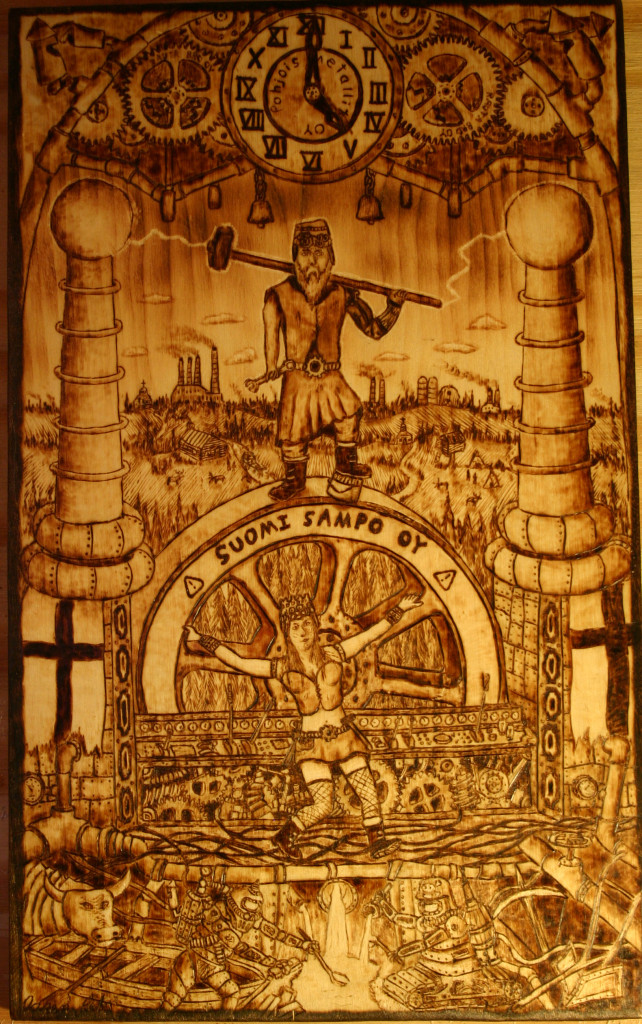
Kalevala Sampo Metsami Creations
The most fascinating mystery of the Kalevala epic is Sampo - the ultimate source of prosperity, a magic mill capable to produce endless supply of gold, salt and grain.
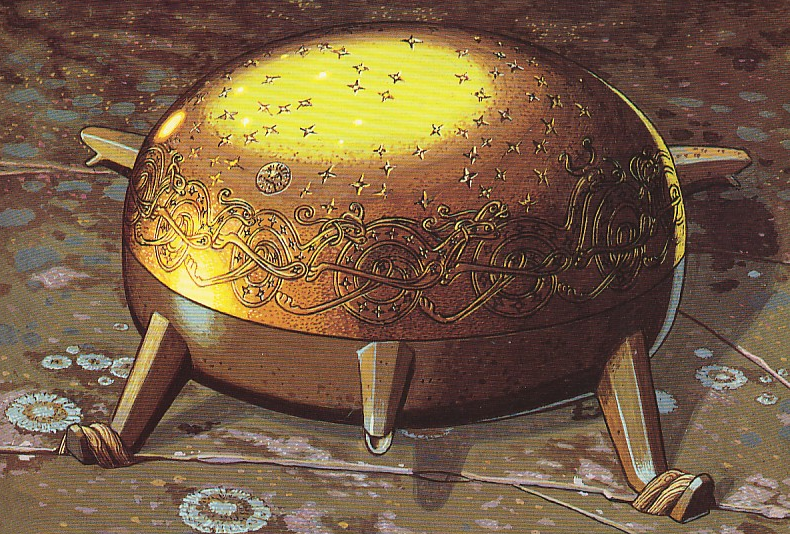
Sampo và sử thi Kalevala
The Kalevala is primarily the story of the relations—amicable at first but increasingly hostile— between the people of Kaleva and the northern tribe of Pohjola. Ihnarinen forges the Sampo for.
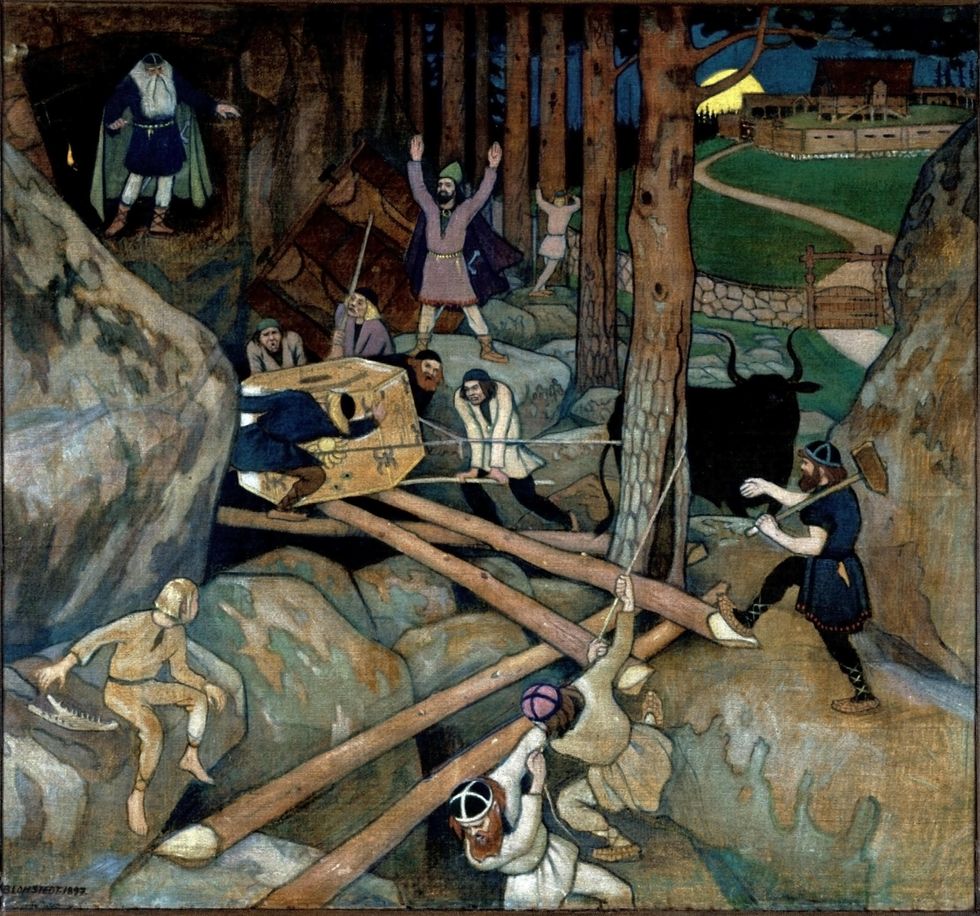
Sampo i Kalevala Magiska föremålet sjönk till botten SvD
Sampo The Theft of the Sampo, Akseli Gallen-Kallela, 1897 In Finnish mythology, the Sampo ( pronounced [ˈsɑmpo]) [1] is a magical device or object described in many different ways that was constructed by the blacksmith Ilmarinen and that brought riches and good fortune to its holder, akin to the horn of plenty (cornucopia) of Greek mythology.
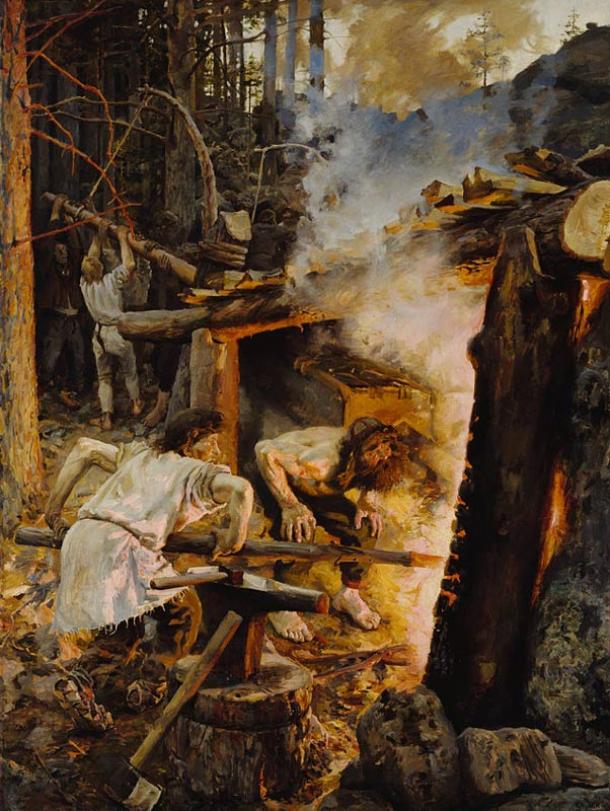
The Magical Sampo Object of Power and Riches in Finnish Folklore Ancient Origins
This article focuses on the films Sampo and Rauta-Aika, the most in-depth audio-visual interpretations of the Kalevala, both born at cultural interfaces: Sampo as a joint Finnish-Soviet production where Finnish research on the Kalevala met the Russian cinematic fairytale tradition, and Rauta-Aika as a meeting ground of two different media, film and television, and drawing on the visual arts.
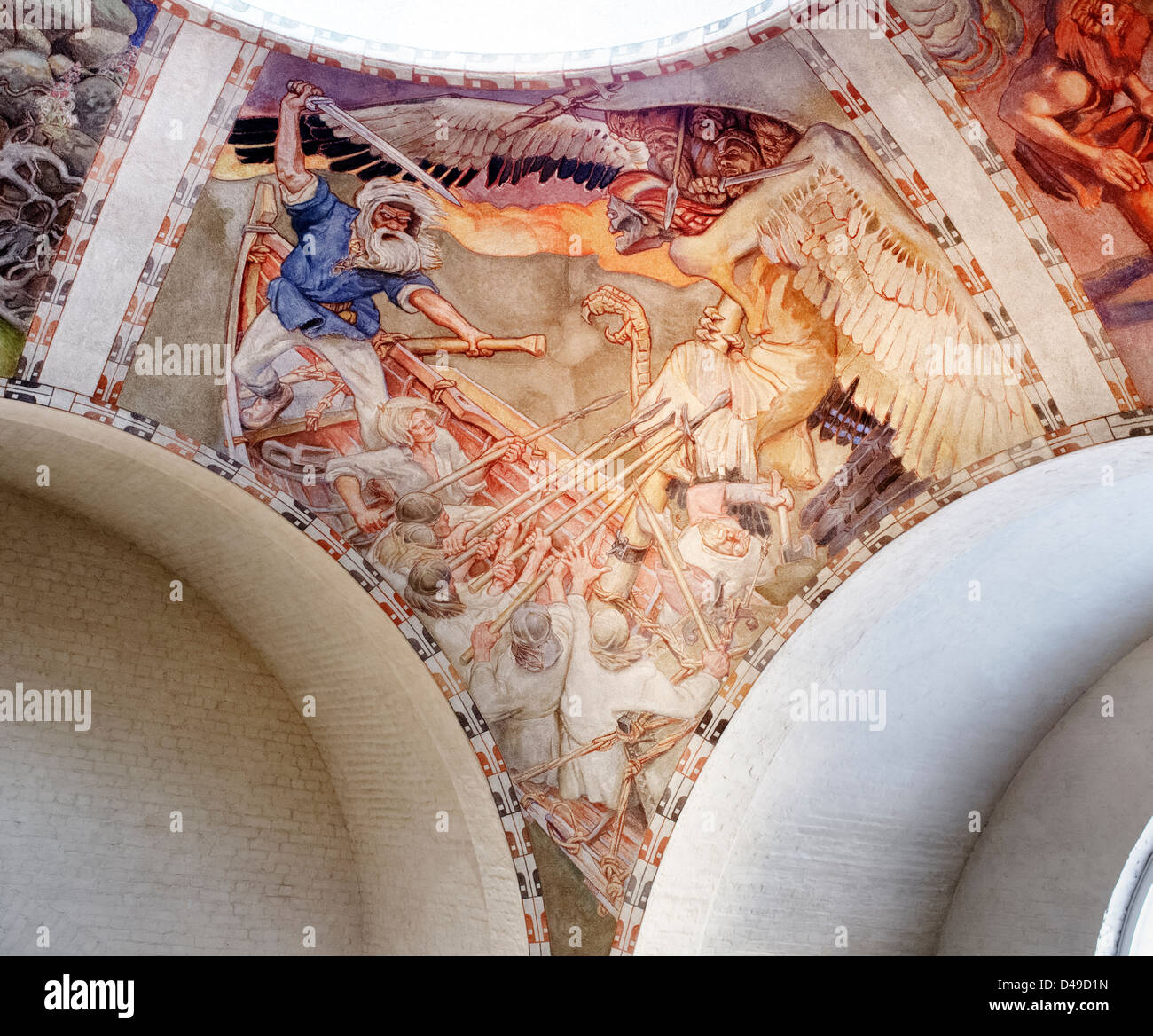
La defensa del Sampo. Kalevala themed fresco mural pintado por Akseli GallenKallela en el techo
The most well-known of these artifacts is Sampo - a very powerful object that essentially creates riches out of thin air. The Sampo has three sides: the first side would make salt, the second would make grain, and the third would make money. Sampo makes many appearances throughout The Kalevala, as many of the deities repeatedly try to steal it.